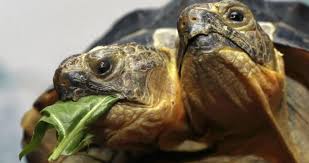From turtles and snakes to cows and pigs, two-headed animals are not only amazing but perhaps not as rare as you might think.
Two-headed animals have been documented in many species, though they are most commonly found in turtles, snakes, and livestock like cows, sheep, and pigs. While their appearance can be startling, their condition is due to genetic mutations and cellular anomalies. According to the BBC, a two-headed, or polycephalic, animal is essentially a set of twins that failed to separate after fertilization. This can happen when a gene known as “sonic hedgehog” or “SHH” is increased during development, causing the head or face to widen and sometimes resulting in two faces. When a group of cells called organizers is triggered, two separate heads can form, leading to individual necks on a single body.
The Mysteries Behind Genetic Abnormalities
What causes these genetic abnormalities? It varies by species. For sharks, which have many reported mutations, researchers consider factors like metabolic disorders, infections, pollution, and overfishing. Overfishing can limit the gene pool, leading to physical abnormalities. Rising water temperatures are also suspected, though more research is needed to understand their genetic impact. Despite the recent reports of two-headed marine life, polycephalic animals are believed to have existed since early human civilization, possibly inspiring ancient myths and stories of multi-headed creatures.
A Miraculous Yet Fragile Existence
Many two-headed animals don’t survive past the embryonic stage, and those that do are often short-lived, lasting only a few weeks or months. Yet, there are exceptions, and their existence is fascinating and remarkable.
Unveiling Earth’s Marvels
Here are some amazing photographs of two-headed animals that survived long enough to be documented:
These images offer a glimpse into the mysterious world of two-headed creatures, sparking curiosity and awe. As we admire their existence, we should remember the complex genetics that contribute to the diversity and marvels of the animal kingdom.
